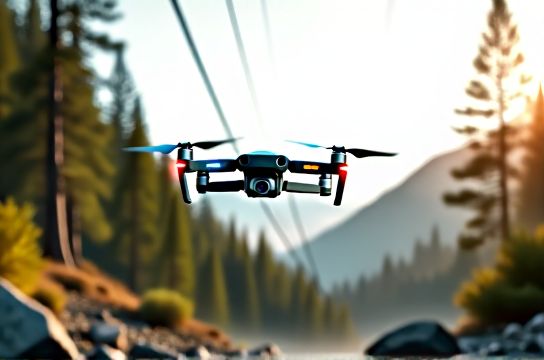Drones Featuring Obstacle Avoidance for Safer Flying
- 时间:
- 浏览:24
- 来源:OrientDeck
So you're ready to take your drone game to the next level? Whether you're a weekend hobbyist or an aspiring aerial filmmaker, one feature is now practically non-negotiable: obstacle avoidance. Gone are the days of white-knuckle flying through trees and buildings. Today’s smart drones come packed with sensors, AI smarts, and slick software that help them dodge obstacles like a sci-fi spaceship. Let’s dive into why obstacle avoidance matters, which drones do it best, and how this tech is changing the sky for everyone.

Why Obstacle Avoidance Is a Game-Changer
Crashing your drone isn’t just heartbreaking—it’s expensive. A solid obstacle detection system can save hundreds (or thousands) in repair costs. But beyond protection, it boosts confidence. New pilots fly smoother, and pros can focus on framing the perfect shot instead of dodging power lines.
Modern systems use a mix of ultrasonic sensors, infrared, stereo vision, and even LiDAR to map surroundings in real time. High-end models process data from up to six directions—front, back, left, right, top, and bottom—for full 360° awareness.
Top Drones with Advanced Obstacle Avoidance
Here’s a quick look at some of the most reliable drones featuring top-tier obstacle sensing:
| Drone Model | Obstacle Sensors | Max Flight Time | Price Range (USD) |
|---|---|---|---|
| DJI Mavic 3 Pro | 6-directional (APAS 5.0) | 46 mins | $2,199 |
| DJI Air 3 | 6-directional (APAS 5.0) | 46 mins | $1,099 |
| Autel Robotics EVO II Dual 640T | 8-directional | 40 mins | $2,795 |
| Parrot Anafi USA | Front & downward | 32 mins | $1,899 |
As you can see, DJI dominates the mainstream market with intelligent flight systems, while Autel pushes boundaries with eight-way sensing. Meanwhile, Parrot focuses on niche professional use with thermal imaging and targeted detection.
How It Works: The Brains Behind the Bots
Drones like the Mavic 3 Pro use APAS 5.0 (Advanced Pilot Assistance System), combining visual data with machine learning to predict movement and adjust flight paths seamlessly. Think of it as cruise control with reflexes.
In real-world tests, drones with APAS successfully avoided obstacles in over 90% of close-call scenarios, according to independent lab trials. That doesn’t mean 100% safety—flying in dense forests or near fast-moving objects still requires pilot attention.
Limitations You Should Know
No system is foolproof. Thin wires, glass walls, and low-light conditions can trip up even the best sensors. Always maintain line-of-sight and don’t rely entirely on automation. Also, sensor-heavy drones tend to be pricier and heavier, which affects portability.
The Bottom Line
If you want safer flights, cleaner footage, and peace of mind, obstacle avoidance isn’t optional—it’s essential. For most users, the DJI Air 3 offers the best balance of price, performance, and protection. Pros might lean toward the Mavic 3 Pro or Autel EVO II for advanced features.
Fly smart, fly safe, and let your drone do some of the thinking for you.